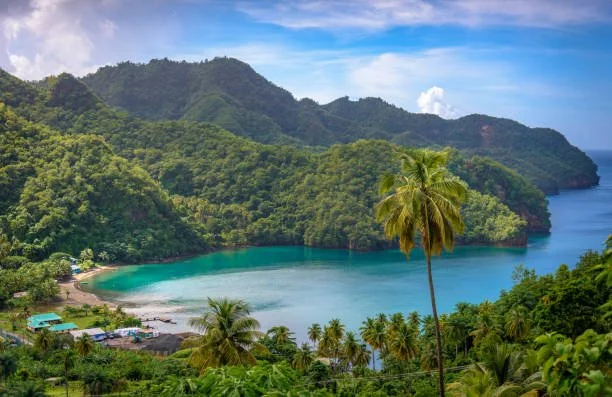Saint Vincent
The roosters start at it early. The sounds of the waves lapping against the hull seem discordant with barnyard noises. I am slightly confused as I awaken in my hammock on the flybridge of the SomewhereHot, then get my bearings and remember where we are: anchored up in a small bay on the west coast of Saint Vincent named Chateau Belair. It sounds fancier than it is. We arrived last night after dark, and I am excited to see this island that I have heard so much about over the years.
The day before my birthday every year is Garifuna Settlement Day in Belize. November 19th is celebrated with a reenactment of the arrival of the first Garifuna people by canoe in the early 1800s. Today, the Garifuna populate the coastal communities in the southern part of the country, continuing their traditions and perpetuating their culture. It is their origin story that brings us to Saint Vincent over 1,000 miles away.
The Garifuna story begins in the 1600s when a slave ship hit a reef and wrecked near the Caribbean island of St. Vincent. The would-be West African slaves took refuge on the island and ultimately intermarried with the indigenous Carib and Arawak populations. Thus, the Garifuna people never worked as slaves but spent the next 150 or so years fishing and farming.
Throughout the 18th century, the Garifuna fiercely resisted British colonization. After decades of conflict, the British defeated the Garifuna in 1797 and forcibly deported over 5,000 of them to the island of Roatán, off the coast of Honduras. Due to Roatán's poor soil conditions, many Garifuna migrated to the mainland and established communities along the Caribbean coasts of Honduras, Belize, Guatemala, and Nicaragua.
I have heard this story repeated dozens of times in Belize. The Garifuna story is shared with our guests on Thatch Caye during the weekly cultural nights. Almost certainly, the people telling the story have never been to Saint Vincent. Now I have. It is beautiful, and I don’t blame the Garifuna for not wanting to leave.
Christopher Columbus named the island on his third voyage after arriving on the feast day of Saint Vincent of Saragossa, the patron saint of winemakers, who was martyred in all the worst ways. Wikipedia says that 110,000 people are living here today. I can’t find them. All I see from my hammock are a few simple fishing shacks that look like they may have been built before the British expelled the natives and a bunch of roosters – time to go exploring.





